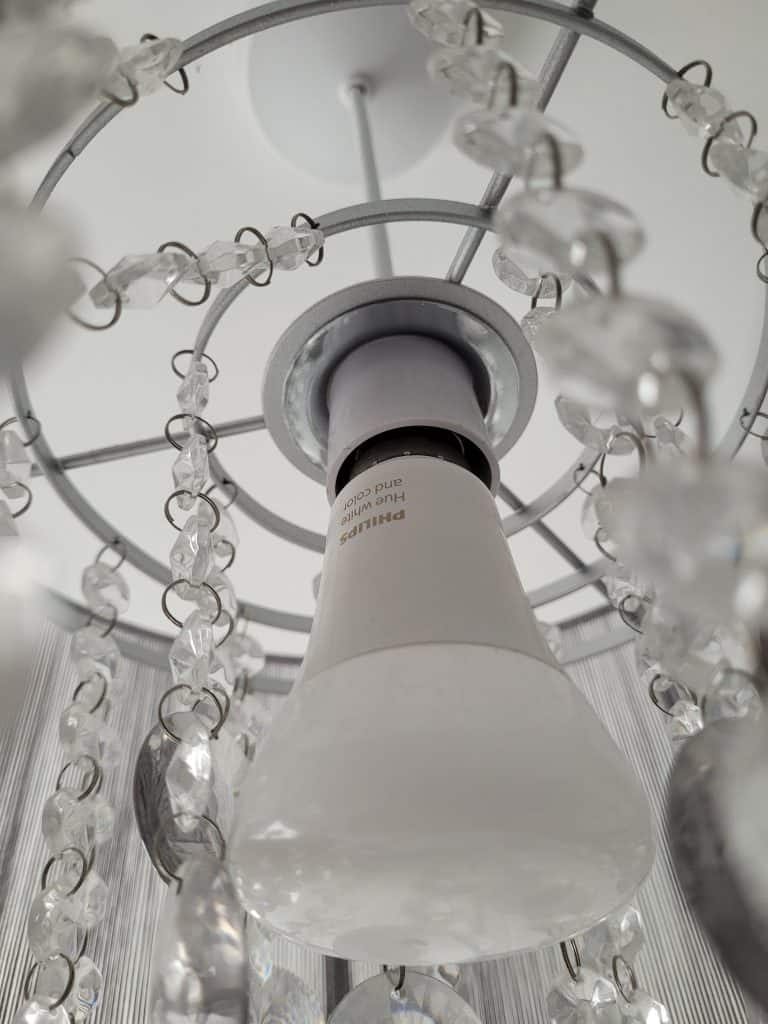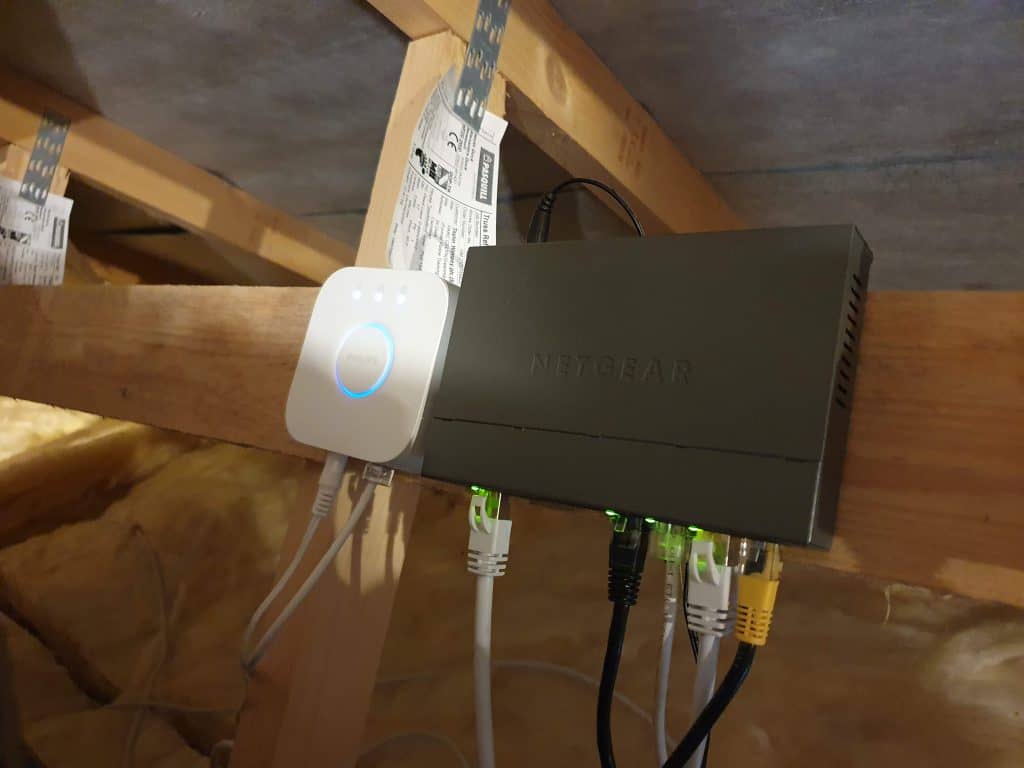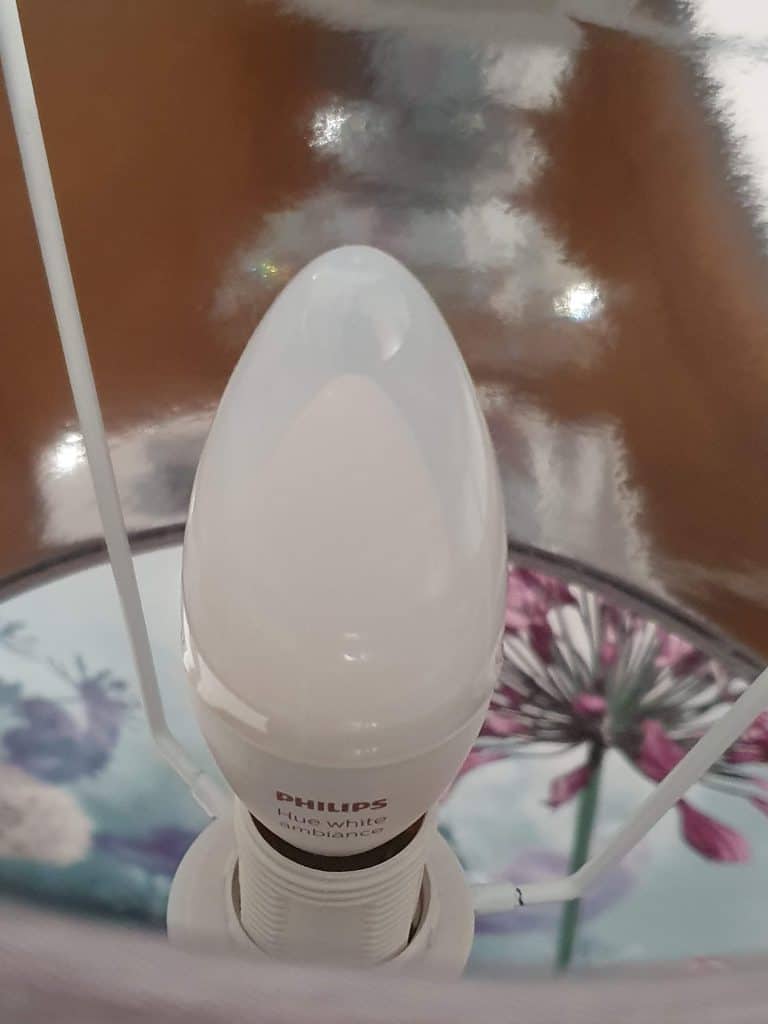Some smart bulbs like LIFX cannot work without Wi-Fi, which is an internet-based communication protocol. But when it comes to Philips Hue smart bulbs, Wi-Fi isn’t fully necessary because these bulbs use ZigBee instead, which is a non-internet-based communication protocol.
Don’t forget that some features of Hue smart bulbs including dimmer switches and schedules are designed to work even without the internet. To put it simply, Hue bulbs require the internet a lot less than other smart bulbs.
Unfortunately, you won’t be able to use the Hue app or Echo voice control to control your lights and get additional functionalities without the internet.
About Philips Hue Bulbs & How The Smart Bulbs Work

Philips Hue is a line of smart bulbs made by a less-known company—Signify. Are Philips and Signify the same company?
The short answer is NO. Signify is just a company licensed by the legendary Royal Philips brand to use its name in some of its products including the smart bulbs above. Furthermore, Signify is also associated with other brands such as Advance, Color Kinetics, WiZ., Interact, and Phillips where it makes products and gives them these brand names.
Philips Hue smart bulbs are very popular because they are of impressive quality. Signify produces some of the best and widest color selections for their bulbs. Notably, many of their color bulbs contain more than just three light-emitting diodes(LED)—Blue, Green, and Red. In other words, they are also equipped with White and Warm White LEDs, making for 5 LEDs in total per bulb. That explains why these bulbs produce impressive lights and why they cost more money than other similar bulbs.
Now, many Philips Hue smart bulbs require a Hue Bridge to function optimally. The same can be said for Hue light strips and outdoor lights. This bridge device is what enables the bulbs to communicate with each other plus other integrated devices within your smart lighting setup over ZigBee.
Even though purchasing Hue bridge will add to your budget, the device offers a huge benefit to Hue light users. To be precise, the Hue Bridge allows them to fully operate and control their Hue bulbs even without the internet. This is unlike Wi-Fi-based smart bulbs that cannot be used and controlled in the absence of the internet.
What’s ZigBee?
ZigBee is a less-known wireless communication protocol for smart home devices like Philips Hue bulbs. Unlike Wi-Fi, it’s not internet-based as it works more like Bluetooth.
The beauty of ZigBee is that the more protocol-supporting devices connected to the network, the stronger the network and the longer its range. That’s because these devices tend to form what’s known as “ZigBee Mesh,” a mesh network protocol where each device added forms a new point on the mesh and strengthens the overall network. This is unlike Wi-Fi where the signal becomes weaker with each new device that is added to it.
Examples of ZigBee devices (devices that support the ZigBee communication protocols) include; Philips Hue, Amazon Echo Plus & Echo Show 10, and Samsung SmartThings. Others are Samsung Comcast Xfinity Box, Yale smart locks, Honeywell thermostats, and Hive Active Heating and accessories.
When Philips Hue Bulbs’ ZigBee Mode Does Require the Internet

You can set your Hue bulbs to the ZigBee mode so that they communicate with each other via the non-internet-based wireless communication protocol for smart home devices. But remember that ZigBee can also work with the internet and there are many scenarios whereby you may need to connect it with your Wi-Fi network. These include:
- During the initial system setup that needs you to link the Hue bridge with your online Philips Hue account.
- When you want to add updates, which are initially sent over the internet, to your Hue bulbs and/or Hue bridge.
- When you want to control your Hue bulbs and smart lights away from home with a portable gadget such as a smartphone or tablet.
- When you want to use the Hue app to control your smart bulbs. In other words, when you want to control your bulbs online as opposed to through your ZigBee-based Hue bridge device.
So whilst Philips Hue doesn’t strictly need the internet (as we look at in more detail below), it’s still essential for some functions.
When Philips Hue Bulbs’ ZigBee Mode Doesn’t Require the Internet
As said earlier, ZigBee is a non-internet-based communication protocol for smart home devices. This means that your Hue Bridge that is based on it enables you to operate and control your Hue smart bulbs even in the absence of the internet.
Not only that, even the main Hue accessories such as the dimmer switch and the tap button for controlling multiple Hue devices simultaneously are designed to work without the internet as they are similarly ZigBee-based.
Do The Philips Hue Switch and Smart Button Work Without the Internet?
Before answering the question, here’s what you need to know about the Philips Hue Switch and Smart Button. The Hue switch is installed behind Philips Hue light switches. This Hue accessory allows you to operate your Hue smart lights using the existing switches in your smart home. With it, you can even set multiple scenes on an individual light or room.
The Smart button is another amazing Hue accessory you can use with your smart lights from the same manufacturer. This item is so smart that it knows how to set the best light for any given moment, using the outside natural light.
To answer the above question, yes, the Hue Switch and Smart Button are designed to work without the internet. This is because they also communicate using ZigBee, directly to the Hue Bridge, meaning that there’s no direct internet interaction needed.
When Philips Hue Bulbs’ Bluetooth Mode Does Require the Internet

The newer Philips Hue smart bulbs have a Bluetooth mode of operation that allows you to do a few things with your bulbs such as turning them on/off, changing their color, and dimming them. Though this mode doesn’t require an internet connection because it doesn’t offer many features such as sunset/sunrise alarms and automation routines, there are very few circumstances where it does. These are; during the initial setup and when you want to add any updates to your smart lighting system through the Hue app.
Final Thoughts
Is Philips Hue dependent on the internet? Or is local control an option? The answer to the first question is NOT REALLY. As for the second question, the answer is YES. Philips Hue smart bulbs are designed to work with the Hue bridge device, which supports ZigBee but not Wi-Fi. And as you now know, ZigBee isn’t an internet-based communication protocol for smart home devices.
However, there are a few case scenarios whereby Philips Hue may require the internet, such that you’ll need to connect your Hue bridge device to your internet router. These scenarios include; during the initial system setup that needs you to link the Hue bridge with your online Philips Hue account and when you want to add updates to your smart lighting system. That’s not to mention when you want to control your Hue bulbs and smart lights away from home and when you want to use the Hue app.
